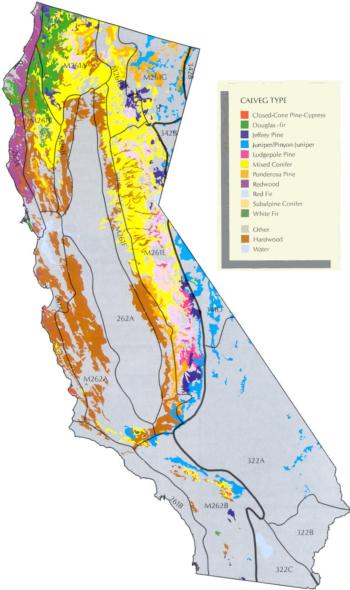Forest Ecosystems and Growth

California forests we see today are the product of the long history of physical, biological and cultural events taking place in California. The climate and geology along with a long background of use first by Native Americans, then settlers have shaped the forests into the assemblage trees and wildlife that we find today. For more background on the history of California forests, please see the UCCE publication:
Forest Stewardship Series 4 - Forest History Publication 8234
Understanding how trees grow is essential to assessing the condition of the forest resources on a property and being able to steward it towards the landowner's desired condition. Trees are locked in a constant competitive struggle with each other and other plants for water, sunlight and nutrients. Getting to know tree physiology, tree species and tolerances, and their competitive strategies is the critical first step in understanding how to steward a forest. For more background on competition and growth inf California forests, please see the UCCE publication:
Forest Stewardship Series 5 - Tree Competition and Growth Publication 8235
Other Resources
Ecological Sub-regions of California. USDA Forest Service, Region 5.1997.This manual contains biophysical descriptions, characteristics of Sierra Nevada and Klamath mountains, the Northern California Coast (redwoods),the Southern Cascades,and Southern California's mountains.
http://www.fs.fed.us/r5/projects/ecoregions/
Silvics of North America. This comprehensive guide to the habitat and life history of North American native conifers (volume 1) and hardwoods (volume 2) includes all species of California conifers.
California’s Forest Resources, 2001-2010 – This report describes the status of California’s forest resources based upon Forest Inventory and Analysis (FIA) plots throughout the state.
California's Forest Resources 2001-2010 (link)
California's Forests and Rangelands: 2017 Assessment . This assessment by CalFire describes California’s forest and rangeland conditions and trends, and the priority landscapes in need of protection from climate change, wildfire, development, pests and diseases.
